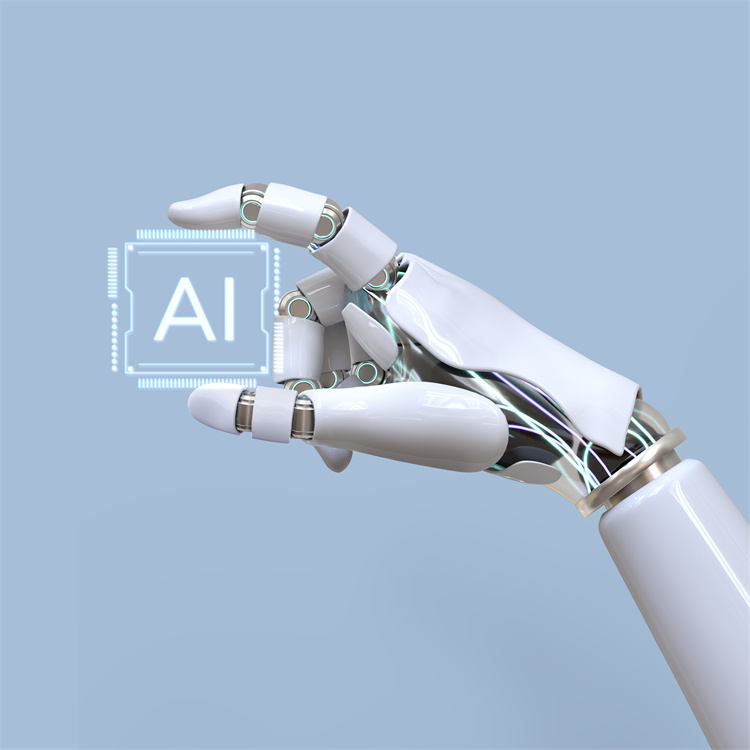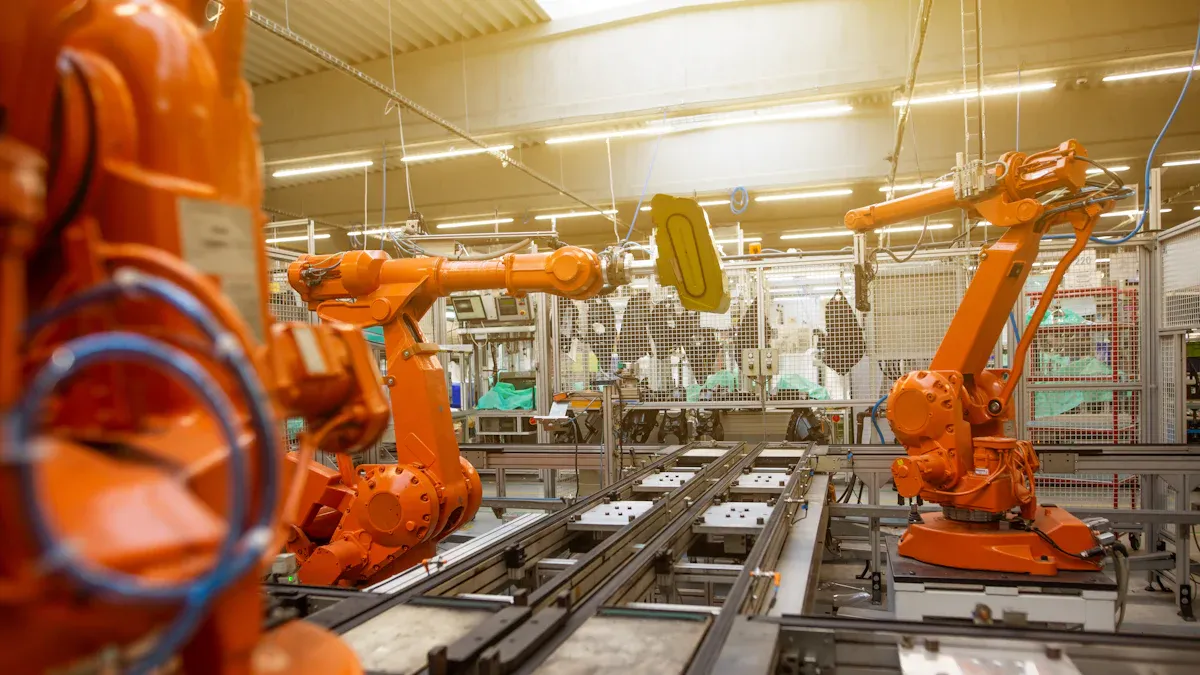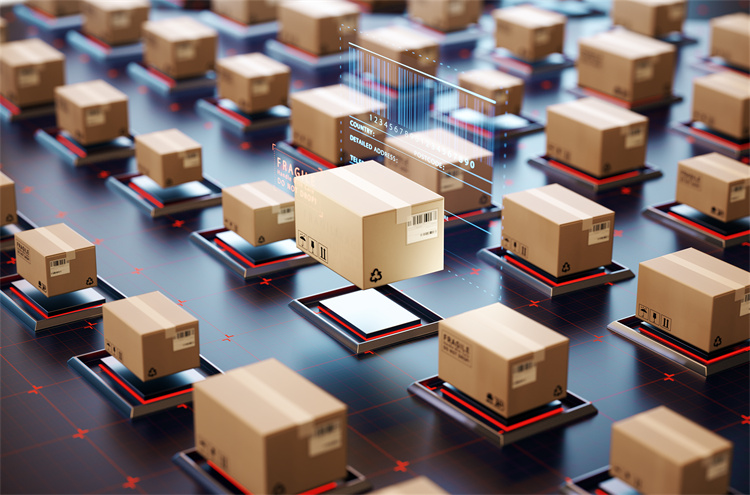AI forecast manufacturing demand accuracy

Artificial intelligence (AI) is revolutionizing how manufacturers predict demand. By leveraging advanced algorithms, AI processes vast datasets to identify patterns and anticipate market needs with precision. This transformation has tangible benefits:
In 2024, production planning saw the largest revenue share, reflecting heavy investment in AI-powered forecasting systems.
Machine learning enables accurate demand predictions by analyzing historical data and market trends.
Companies using AI insights optimize inventory and production, reducing costs while boosting efficiency.
For instance, an automotive components manufacturer cut waste by 25% through AI-enhanced forecasting. Tools like JusLink by JUSDA exemplify how AI reshapes manufacturing demand, ensuring accuracy and operational excellence.
Key Takeaways
AI improves demand predictions, helping manufacturers know market needs better.
Companies using AI save money by managing stock and production wisely.
Good predictions make customers happy with on-time products and deliveries.
Combining AI with human skills boosts decisions and work efficiency.
Businesses using AI tools stay ahead and adjust fast to changes.
Why Accurate Manufacturing Demand Forecasting Matters
Cost Savings Through Optimized Production
Accurate manufacturing demand forecasting plays a pivotal role in reducing costs and optimizing production processes. By aligning production schedules with actual market needs, businesses can avoid overproduction and underutilization of resources. This alignment ensures that raw materials, labor, and equipment are used efficiently.
For example, companies leveraging AI-driven forecasting tools have reported a 15-25% improvement in forecast accuracy compared to traditional methods. This improvement translates into significant cost savings by minimizing waste and enhancing decision-making.
Additionally, accurate forecasting reduces logistics and transportation costs. Aligning transportation strategies with demand predictions ensures operational savings and timely deliveries. Businesses that adopt these practices often experience a 10-20% boost in productivity, further solidifying their competitive edge.
Improved Inventory Management and Waste Reduction
Effective demand forecasting directly impacts inventory management. It helps businesses maintain optimal inventory levels, reducing the risks of overstocking or stockouts. This balance minimizes storage costs and prevents the accumulation of obsolete items.
Statistical Method | Impact on Inventory Management | Reduction in Waste |
|---|---|---|
Improves accuracy of demand predictions | Reduces excess stock and obsolete items | |
Time-Series Forecasting | Optimizes inventory levels based on trends | Minimizes damaged goods and waste |
Lean Methodologies | Streamlines processes to enhance efficiency | Reduces non-value-added activities |
By adopting these methods, manufacturers can achieve better inventory control and significantly reduce waste. For instance, time-series forecasting enables businesses to anticipate seasonal demand fluctuations, ensuring that inventory levels align with market trends.
Gaining a Competitive Edge in Dynamic Markets
In today’s fast-paced economy, businesses must adapt quickly to shifting market conditions. Accurate forecasting of manufacturing demand empowers companies to stay ahead of competitors by enabling proactive decision-making. Organizations that leverage AI-driven tools gain the ability to anticipate market trends and respond with agility.
AI-powered forecasting tools provide manufacturers with real-time insights into customer preferences and purchasing behaviors. These insights allow businesses to launch products at the right time, capture emerging opportunities, and avoid costly missteps. For example, a consumer electronics company used AI to predict a surge in demand for smart home devices. By ramping up production early, they captured a larger market share and outpaced competitors.
Companies that adopt advanced forecasting solutions also strengthen their supply chain resilience. They can identify potential disruptions, such as raw material shortages or transportation delays, and implement contingency plans. This capability ensures uninterrupted operations and builds trust with customers and partners.
Moreover, accurate demand forecasting enhances collaboration across departments. Sales, marketing, and production teams can align their strategies, ensuring cohesive efforts toward business goals. This alignment not only improves operational efficiency but also fosters innovation, as teams work together to meet market demands.
Businesses that embrace AI-driven forecasting tools position themselves as industry leaders. They gain the ability to adapt to market changes, reduce risks, and deliver exceptional value to customers. In a competitive landscape, these advantages translate into long-term growth and profitability.
Tip: Companies that integrate AI into their demand forecasting processes often see measurable improvements in market responsiveness and customer satisfaction.
How AI Enhances Manufacturing Demand Forecast Accuracy

Machine Learning for Pattern Recognition and Trend Analysis
Machine learning transforms how manufacturers predict demand by uncovering patterns hidden in complex datasets. These algorithms excel at processing vast amounts of data, identifying correlations, and making accurate forecasts. For example:
Machine learning models analyze historical sales data to detect seasonal trends and recurring demand cycles.
They integrate external factors, such as holidays or economic shifts, to adjust predictions based on their impact on consumer behavior.
By segmenting demand based on customer purchasing habits, manufacturers can plan production more effectively and reduce inventory waste.
Performance metrics like precision, recall, and RMSE (Root Mean Square Error) measure the accuracy of these models. For instance:
These metrics ensure that machine learning tools deliver reliable results, enabling manufacturers to optimize production and inventory management. Real-time forecasting capabilities further enhance agility, helping businesses adapt quickly to market changes and minimize stockouts.
Predictive Analytics for Real-Time Demand Insights
Predictive analytics empowers manufacturers to make data-driven decisions by providing real-time insights into demand fluctuations. AI algorithms analyze large datasets instantly, identifying patterns and predicting outcomes with remarkable accuracy. This capability allows manufacturers to:
Respond swiftly to changes in demand, optimizing production schedules and reducing lead times.
Enhance efficiency by aligning production with actual market needs, minimizing waste and excess inventory.
Improve profitability by streamlining operations and reducing costs.
For example, real-time demand analytics have been shown to significantly improve predictive accuracy and lead time management. By monitoring production data in real time, manufacturers can establish performance baselines and adjust operations dynamically. This approach ensures that material and production demands are met efficiently, enhancing overall supply chain performance.
Integration of External Data Sources for Comprehensive Forecasting
AI-driven forecasting systems gain a competitive edge by incorporating external data sources. These systems analyze factors like economic indicators, weather patterns, and consumer sentiment to provide a holistic view of market conditions. A notable case study highlights the benefits of this approach:
A global retailer implemented an AI-powered demand forecasting system that integrated economic data and consumer sentiment analysis. This system accurately predicted demand fluctuations, resulting in a 20% reduction in stockouts and a 15% decrease in excess inventory. These improvements not only optimized inventory management but also enhanced customer satisfaction.
By leveraging external data, manufacturers can anticipate market shifts and adjust their strategies proactively. This capability ensures that businesses remain agile and competitive in dynamic markets. Integrating diverse data sources also strengthens supply chain resilience, enabling manufacturers to mitigate risks and maintain operational continuity.
Continuous Learning and Adaptation to Market Changes
Continuous learning models empower manufacturers to adapt their forecasting strategies to evolving market conditions. These models leverage AI algorithms that refine predictions over time, ensuring businesses remain agile in the face of uncertainty. By analyzing historical data and incorporating real-time insights, manufacturers can continuously improve their forecasting accuracy.
AI-driven systems excel at identifying shifts in consumer behavior and market trends. For example, tree-based algorithms outperform traditional methods when forecasting new product activations. These algorithms adapt to dynamic conditions by excluding data from the predicted country during training, ensuring forecasts remain relevant across diverse markets.
Key Findings | Description |
|---|---|
Effectiveness of Tree-Based Algorithms | These algorithms outperform traditional methods in forecasting new product activations in manufacturing. |
Importance of Cross-Validation | Best results are achieved when excluding data from the predicted country during training, indicating adaptability to market conditions. |
Policy Implications | Provides a scientifically tested measure for the feasibility of introducing new products in specific markets. |
Manufacturers benefit from these adaptable systems by responding swiftly to changes in demand. For instance, a company introducing a new product can use AI models to predict its market viability, reducing risks and optimizing production schedules. This proactive approach minimizes waste and ensures resources are allocated efficiently.
Continuous learning also enhances supply chain resilience. AI systems monitor external factors like economic shifts and geopolitical events, enabling manufacturers to adjust their strategies in real time. This capability ensures uninterrupted operations and strengthens relationships with suppliers and customers.
By integrating continuous learning models, manufacturers gain a competitive edge. These systems foster innovation by enabling businesses to experiment with new products and markets confidently. As a result, companies can capitalize on emerging opportunities while maintaining operational efficiency.
Note: Businesses that adopt AI-driven continuous learning models often experience measurable improvements in forecasting accuracy, operational agility, and market responsiveness.
AI vs. Traditional Methods in Manufacturing Demand Forecasting
Limitations of Traditional Forecasting Approaches
Traditional forecasting methods, while foundational, often fall short in addressing the complexities of modern manufacturing demand. These methods rely heavily on historical data and linear models, which struggle to adapt to non-linear demand patterns and seasonality. This rigidity limits their ability to provide accurate predictions in dynamic markets.
Traditional methods frequently fail to predict demand accurately, leading to overstocking or stockouts.
They lack the capability to manage inventory effectively, resulting in increased holding costs or lost sales.
These approaches often struggle with integrating external factors like economic shifts or consumer sentiment, which are critical for comprehensive forecasting.
For example, a US consumer product goods company compared traditional methods with an ensemble machine learning (ML) model for weekly sales forecasting. The ML model demonstrated significantly lower mean absolute percentage error, highlighting the limitations of traditional techniques in handling complex datasets.
Key Insight: Businesses relying solely on traditional forecasting risk inefficiencies and missed opportunities due to their inability to adapt to evolving market conditions.
Advantages of AI-Driven Forecasting (Speed, Scalability, Precision)
AI-driven forecasting methods revolutionize how manufacturers predict demand by addressing the shortcomings of traditional approaches. These advanced systems excel in speed, scalability, and precision, enabling businesses to stay competitive in fast-paced markets.
Metric | AI-Driven Methods | Traditional Approaches |
|---|---|---|
Speed | Processes data in seconds/minutes | Time-consuming, long processing time |
Scalability | Handles large, complex datasets | Limited by historical data |
Precision | Often struggles with accuracy |
AI systems process vast amounts of data in real time, allowing manufacturers to respond swiftly to demand fluctuations. Unlike traditional methods, which rely on manual evaluations, AI tools operate continuously without fatigue, ensuring consistent performance. For instance, AI-driven forecasting reduces stockouts by up to 65%, significantly improving inventory management and customer satisfaction.
Additionally, AI's ability to integrate diverse data sources, such as weather patterns and economic indicators, provides a holistic view of market conditions. This comprehensive approach enhances forecast accuracy, enabling manufacturers to optimize production schedules and minimize waste.
Pro Tip: Adopting AI-driven forecasting tools empowers businesses to make data-driven decisions, ensuring agility and resilience in dynamic markets.
Combining AI with Human Expertise for Optimal Results
While AI-driven forecasting offers unparalleled advantages, combining it with human expertise creates a powerful synergy. This hybrid approach leverages the strengths of both technology and human intuition, resulting in more reliable and actionable insights.
Demand planners, for example, play a crucial role in interpreting AI-generated insights. They explore external data sources, translate technical findings into actionable strategies, and advocate for data-driven decision-making within their organizations. This collaboration ensures that forecasts align with business objectives and market realities.
By combining AI analytics with human expertise, manufacturers can adapt to market changes more effectively. This approach fosters innovation, enhances transparency, and builds trust among stakeholders, ultimately driving long-term success.
Takeaway: The integration of AI and human expertise transforms forecasting into a strategic advantage, enabling businesses to navigate uncertainties with confidence.
Real-World Applications of AI in Manufacturing Demand Forecasting

Success Stories from Industries Like Automotive and FMCG
AI-driven forecasting tools have transformed industries like automotive and FMCG, delivering measurable success across various metrics. These tools optimize supply chain strategies, enhance productivity, and reduce costs. The following table highlights key achievements:
For example, an FMCG company leveraged AI to improve demand forecasting accuracy by 30%. This improvement reduced stockouts and enhanced customer satisfaction. Similarly, an automotive manufacturer used predictive analytics to streamline supply planning, cutting logistics costs by 20%.
How JUSDA’s JusLink Enhances Demand Forecasting for Clients
JUSDA’s JusLink platform exemplifies how AI revolutionizes manufacturing demand forecasting. By integrating IoT, cloud computing, and big data analytics, JusLink enables seamless connectivity across the supply chain. This connectivity breaks down traditional silos, fostering collaboration and efficiency.
The platform provides tailored solutions for industries like electronics and automotive, adapting to rapidly changing consumer demands. Its advanced technologies enhance productivity and cost-effectiveness by optimizing resource allocation and production processes. Clients using JusLink report significant improvements in forecast accuracy and operational agility, positioning themselves as leaders in their respective markets.

JUSDA Solutions
To provide you with professional solutions and quotations.
Managing Supply Chain Disruptions with AI-Driven Insights
AI-driven forecasting tools play a critical role in mitigating supply chain disruptions. These tools reduce errors by up to 50%, ensuring smoother operations. They also mitigate risks of lost sales and product unavailability by as much as 65%, safeguarding revenue streams.
Companies integrating AI into supply chain operations report substantial performance improvements. Real-time insights enable businesses to anticipate disruptions, such as raw material shortages or transportation delays, and implement contingency plans. This proactive approach ensures uninterrupted operations and strengthens customer trust.
For instance, a global electronics manufacturer used AI to predict potential supply chain bottlenecks. By addressing these issues early, they avoided delays and maintained consistent delivery schedules. This capability highlights the transformative power of AI in managing supply chain complexities.
Tip: Businesses adopting AI-driven forecasting tools can enhance resilience, reduce risks, and maintain a competitive edge in dynamic markets.
AI continues to redefine manufacturing demand forecasting, delivering unmatched accuracy and efficiency. Solutions like JusLink from JUSDA empower businesses to adapt to market changes with precision. These tools optimize production, reduce waste, and enhance customer satisfaction. While challenges like implementation costs exist, the advantages far outweigh them. Companies that embrace AI gain a competitive edge, ensuring long-term success in a fast-evolving industry. Ignoring this shift risks falling behind. Adopting AI is no longer optional—it is essential for thriving in today’s manufacturing landscape.
FAQ
Can AI forecasting help manage supply chain disruptions?
Yes! AI tools predict potential disruptions like material shortages or delays. They provide actionable insights, enabling businesses to implement contingency plans. This proactive approach ensures uninterrupted operations and strengthens supply chain resilience.
Is AI forecasting suitable for small businesses?
Absolutely! AI solutions like JusLink offer scalable features tailored to business needs. Small businesses benefit from improved efficiency, reduced costs, and enhanced decision-making. These tools level the playing field, allowing smaller enterprises to compete effectively.
What industries benefit most from AI-driven forecasting?
Industries like automotive, FMCG, electronics, and healthcare gain significant advantages. AI optimizes production schedules, reduces inventory costs, and enhances customer satisfaction. Businesses in dynamic markets achieve better agility and profitability with AI-powered tools.
See Also
Transforming Data Insights Into Smart Automotive Forecasting Strategies
Maximizing Potential Through High-Tech Manufacturing Consulting Insights
Mastering Lean Logistics for Successful High-Tech Manufacturing
Unlocking Your Automotive Supply Chain's Full Potential Today
